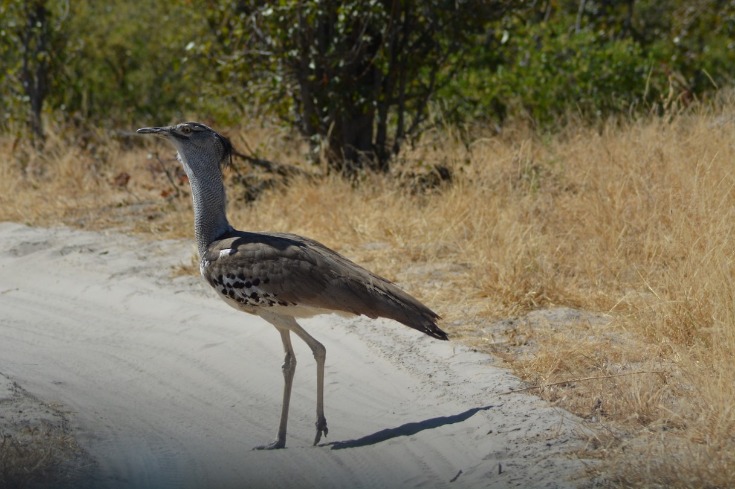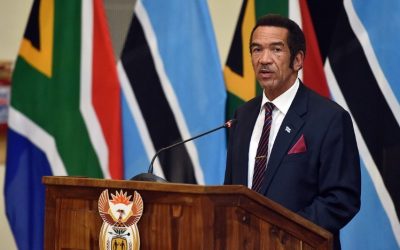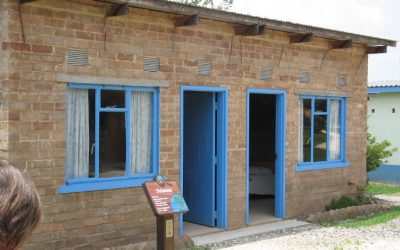Geography and Landscape
Geography and landscape play a vital role in shaping the natural and cultural identity of a region. Botswana and South Africa, located in southern Africa, feature diverse terrains ranging from expansive deserts and savannas to lush forests and mountain ranges. These landscapes not only define the climate and ecosystems of the area but also influence the lifestyles, economies, and heritage of their people. Exploring the geographical features of these countries reveals the rich natural beauty and environmental significance of southern Africa.
Botswana’s Physical Features
Botswana’s geography and landscape are characterized by vast, open plains, extensive savannahs, and significant river systems that shape its physical features. The country is largely flat, with the Kalahari Desert covering a substantial part of its territory, creating a semi-arid environment that influences its flora and fauna. Prominent features include the Okavango Delta, one of the world’s largest inland deltas, which supports diverse ecosystems and wildlife. The Botswana landscape is interrupted by low-lying hills and rocky outcrops, particularly in the eastern regions near the border with South Africa. The country’s elevation ranges from about 900 meters in the delta region to over 1,200 meters in higher inland areas, contributing to its unique landscape. The Botswana-South Africa border lies to the south, where the terrain transitions into the more mountainous and fertile regions of South Africa, marking a contrast in physical geography between the two countries. Overall, Botswana’s physical features are marked by natural water bodies, arid plains, and a variety of terrains that support rich biodiversity and distinct environmental ecosystems.
South Africa’s Diverse Topography
South Africa boasts a remarkably diverse topography, offering a wide range of landscapes from majestic mountains to expansive plains. The country is characterized by its intricate geography, which includes the Drakensberg Mountains, the Kalahari Desert, and lush coastal regions along the Atlantic and Indian Oceans. These varied landscapes contribute to South Africa’s rich biodiversity and make it a unique destination for nature enthusiasts and travelers alike. In contrast, Botswana features predominantly flatlands and savannas, with the Okavango Delta standing out as one of the world’s largest inland deltas, supporting an incredible array of wildlife. While South Africa’s topography is highly varied and mountainous, Botswana’s landscape is more subdued but equally vital for its ecological significance. Both countries’ landscapes reflect their distinct environments, shaping their cultures, ecosystems, and tourism opportunities.
Shared Natural Borders and Ecosystems
Botswana and South Africa share a rich and diverse geographical landscape that significantly influences their ecosystems and natural borders. The two countries are bordered by various natural features, including rivers, mountains, and vast savannahs, which define their shared boundaries and ecological zones. The Okavango Delta in Botswana, one of the world’s largest inland deltas, supports a unique ecosystem that extends into northern South Africa, fostering a variety of wildlife and plant species. The Drakensberg mountain range serves as a natural border in certain regions, offering protection for diverse habitats and serving as a vital water source. These shared natural borders and ecosystems are crucial for conservation efforts and maintaining biodiversity across both nations, highlighting the interconnectedness of their environment and the importance of sustainable land management.
History and Colonial Heritage
The history and colonial heritage of Botswana and South Africa are deeply intertwined with their cultural identities and societal development. Both nations bear the marks of their colonial past, which has shaped their political boundaries, social structures, and economic foundations. Understanding their historical narratives provides valuable insight into their present-day diversity and ongoing efforts towards progress and reconciliation.
Pre-Colonial Kingdoms and Societies
Botswana and South Africa have rich histories deeply rooted in their diverse pre-colonial kingdoms and societies. Prior to European colonization, the region was home to prominent kingdoms such as the Tswana in Botswana and the Zulu and Sotho in South Africa. These societies developed sophisticated social structures, governance systems, and cultural practices that have shaped their modern identities. The Tswana people, for example, established powerful chiefdoms that organized their territory into various tribes, each led by a chief, fostering a sense of unity and tradition that persists today. In South Africa, the Zulu kingdom rose to prominence in the early 19th century under Shaka Zulu, creating a highly organized military state that influenced the political landscape of the region. These pre-colonial societies played a crucial role in resisting early European incursions but eventually faced profound changes during the colonial period, which left a lasting imprint on their heritage and social fabric. Despite colonial upheavals, many cultural practices and social structures from these ancient kingdoms continue to thrive, serving as a testament to their resilience and enduring influence in both Botswana and South Africa.
Colonial Influence and Settlements
Both Botswana and South Africa possess rich histories shaped by colonial influence and settlement patterns that have significantly impacted their cultural and political landscapes. These nations’ colonial heritages are deeply rooted in their experiences under European powers, primarily Britain, which left lasting legacies in administrative structures, legal systems, and societal organization.
Botswana’s history as the British Protectorate of Bechuanaland was marked by efforts to preserve its indigenous culture and identity, despite colonial administration. Conversely, South Africa experienced more extensive settler colonialism, with the arrival of Dutch and British settlers leading to complex social hierarchies and conflicts that continue to influence the country’s dynamics today.
- Colonial Influence: European powers imposed new governance models, introduced Christianity, and established economic systems rooted in resource extraction, shaping the societal fabric of both countries.
- Settlements: Colonization led to the establishment of towns and infrastructure, often centered around colonial economic interests, which affected indigenous settlement patterns.
- Legacy: Post-independence, both nations grapple with colonial legacies, including inequality, ethnic divisions, and the ongoing impact of settlement policies.
Post-Colonial Developments and Independence
Both Botswana and South Africa have rich histories shaped by colonialism and their subsequent paths toward independence. Botswana, formerly the British protectorate of Bechuanaland, gained independence in 1966, establishing a stable government rooted in traditional leadership and democratic principles. Its colonial heritage influenced its administrative structures, yet it managed a peaceful transition to sovereignty, emphasizing national unity and development. South Africa, on the other hand, experienced colonization by the Dutch and British, which profoundly impacted its social and political landscape. The apartheid regime, a legacy of colonial and racial policies, persisted until the early 1990s, leading to significant internal struggle and resistance. The end of apartheid and the establishment of a democratic government in 1994 marked a major post-colonial development, transitioning South Africa toward equality and reconciliation. Both countries’ histories highlight the lasting influence of colonial rule and the diverse trajectories they followed to achieve independence and development.
Political Systems and Governance
Political systems and governance shape the way countries are organized and how power is exercised and distributed among their citizens. In the context of Botswana and South Africa, these systems reflect their unique historical, cultural, and social developments. Understanding their political frameworks provides insight into their governance practices, democratic processes, and the challenges they face in fostering stability and development.
Botswana’s Democratic Framework
Botswana’s political system is a stable democratic framework characterized by a parliamentary republic structure, which contrasts with South Africa’s multi-party democracy embedded within a constitutional state. Botswana has maintained consistent democratic practices since independence, demonstrating transparency and strong governance. Its governance emphasizes the rule of law, respect for human rights, and peaceful political transitions, serving as a model for the region.
Key features of Botswana’s Democratic Framework include:
- A directly elected President who serves as both head of state and government.
- An elected National Assembly responsible for legislative functions.
- A multi-party system with competitive elections held regularly.
- An independent judiciary that upholds the constitution and legal rights.
- “Independence” of institutions to prevent executive overreach.
In comparison, South Africa’s political system is characterized by a constitutional democracy with a complex multi-tiered governance structure, including national, provincial, and local levels. South Africa’s democracy was shaped post-apartheid, emphasizing inclusivity, constitutional rights, and separation of powers, but it faces challenges related to corruption and governance issues.
- South Africa has a President who is elected by the National Assembly.
- The country possesses a Bill of Rights guaranteeing fundamental freedoms.
- It features a Constitutional Court that ensures the constitution’s supremacy.
- The political landscape is multi-party, with the African National Congress historically dominant.
- Governance involves federal arrangements and decentralized authority to provinces and municipalities.
While Botswana’s governance model is often praised for stability and transparency, South Africa’s system strives for inclusivity but grapples with governance and policy implementation challenges. Both countries continue to evolve within their unique democratic frameworks, shaping their development trajectories.
South Africa’s Political Structure
South Africa’s political system is a representative democratic republic characterized by a multi-party structure and a separation of powers among the executive, legislative, and judicial branches. It operates under a constitution that guarantees fundamental rights and outlines the framework for governance. South Africa’s governance is marked by a complex federal system involving national, provincial, and local governments, each with distinct responsibilities.
- The President is both the head of state and government, elected by the National Assembly for a fixed term.
- The Parliament consists of the National Assembly and the National Council of Provinces, responsible for making and passing laws.
- The judiciary is independent, with the Constitutional Court being the highest authority on constitutional matters.
- South Africa also features provincial governments that have legislative powers specific to their regions.
- Local governments handle municipal services and local development projects, functioning under legislation that promotes decentralization.
In contrast, Botswana is a stable parliamentary republic with a strong commitment to democratic principles. Its political system is characterized by regular free and fair elections, transparency, and a peaceful transfer of power. The Botswana Democratic Party has been the dominant political force since independence, but the country maintains a multiparty system.
- The President of Botswana is elected by the National Assembly and serves as both head of state and government.
- The legislative body is a bicameral Parliament, consisting of the National Assembly and the Senate.
- The judiciary is independent, with the High Court and the Court of Appeal playing key roles.
- Local governance includes district councils and village development committees that oversee community affairs.
- Both countries emphasize constitutional safeguards and the rule of law to uphold democratic governance.
Regional Cooperation and Diplomatic Relations
Botswana and South Africa exhibit distinct political systems and governance structures that influence their regional cooperation and diplomatic relations. Botswana operates a stable democratic republic characterized by regular elections, a strong commitment to governance, and respect for human rights. South Africa, also a democratic republic, has a complex political landscape shaped by its history of apartheid, resulting in a multi-party system and a constitution that guarantees fundamental rights. The two countries maintain robust regional ties through organizations like the Southern African Development Community (SADC), promoting economic integration, security cooperation, and political stability. Diplomatic relations are generally friendly, with both nations collaborating on issues such as trade, cross-border security, and regional development initiatives. Their partnership underscores a shared interest in fostering peace, stability, and sustainable growth in southern Africa. Overall, their political dynamics and diplomatic engagement underpin a cooperative regional framework aimed at addressing collective challenges and promoting mutual progress.
Economy and Resources
Economy and resources play a vital role in shaping the development and growth of countries like Botswana and South Africa. Both nations possess unique natural resources and economic structures that influence their national progress, employment rates, and regional influence. Understanding their resource management and economic policies provides insight into their pathways toward sustainable development and economic stability.
Botswana’s Mining and Diamond Industry
Botswana’s economy is significantly influenced by its rich mineral resources, with the mining and diamond industries playing a crucial role in national development. The country is renowned for its high-quality diamonds, which constitute a major source of export revenue and foreign investment. Botswana’s stable political environment and effective management of mineral resources have helped it become one of Africa’s leading suppliers of diamonds, attracting international partners and fueling economic growth.
South Africa, neighboring Botswana, possesses diverse mineral resources, including gold, platinum, and coal. Its mining sector is highly developed and forms a core part of the country’s economy. While South Africa’s resource industry is more varied, it faces challenges related to economic inequality and resource management. Both countries benefit from their resource wealth, but Botswana’s exclusive focus on diamonds contrasts with South Africa’s broader mineral base, influencing their respective economic strategies and resource utilization.
South Africa’s Industrial Economy
South Africa’s industrial economy is a crucial component of the country’s overall economic structure, characterized by a diverse range of industries including mining, manufacturing, and energy production. The country is known for its abundant natural resources, particularly minerals such as gold, platinum, and diamonds, which have historically driven economic growth and development. These resources have enabled South Africa to establish a robust industrial sector that supports both domestic consumption and export markets.
In addition to mineral resources, South Africa possesses a well-developed infrastructure, including extensive road networks, ports, and energy facilities, which facilitate industrial activities and trade. The country also has a relatively advanced manufacturing sector that produces automobiles, machinery, and processed metals. However, despite these strengths, the economy faces challenges such as high unemployment, economic inequality, and dependence on mineral exports, which can make it vulnerable to global market fluctuations.
Compared to Botswana, which has a smaller and less diversified economy primarily reliant on diamond mining, South Africa’s larger industrial base provides more resilience and opportunities for growth. Nonetheless, both nations are interconnected within the Southern African region, with South Africa serving as a primary economic hub that influences regional development and resource distribution. Strengthening sustainable resource management and industrial diversification remains a key focus for South Africa’s economic future amid global economic shifts.
Trade Relations and Economic Partnerships
Botswana and South Africa maintain robust economic and trade relationships that are vital to both nations’ development. Botswana’s economy is largely driven by mineral resources, particularly diamonds, which play a crucial role in its exports. South Africa, with a more diversified economy, is a key trading partner, providing infrastructure, manufactured goods, and investment support to Botswana. The two countries collaborate through various trade agreements and economic partnerships to foster regional stability and growth.
Trade relations between Botswana and South Africa are characterized by the exchange of a wide range of goods, including diamonds, minerals, agricultural products, and manufactured items. South Africa is one of Botswana’s largest trading partners, facilitating access to regional and international markets. Both nations benefit from cross-border infrastructure projects and joint ventures that enhance resource management and economic development.
Economic partnerships extend to regional organizations such as the Southern African Development Community (SADC), which aims to promote economic integration and cooperation among member states. These partnerships enable Botswana and South Africa to collaborate on issues related to infrastructure development, resource management, and economic diversification, ensuring sustainable growth and shared prosperity in the region.
Society, Culture, and Languages
Society, culture, and languages play a vital role in shaping the identities of countries around the world. In the context of Botswana and South Africa, these elements reflect a rich tapestry of traditions, diverse communities, and historical influences. Understanding how society functions, the cultural practices embraced, and the multitude of languages spoken provides deeper insight into the unique characteristics of these nations and their interconnected histories.
Ethnic Diversity and Cultural Heritage
South Africa and Botswana are two countries in Southern Africa that exemplify rich societal, cultural, and linguistic diversity. Both nations boast a mosaic of ethnic groups, each with unique traditions, languages, and historical backgrounds that contribute to their vibrant cultural landscapes.
South Africa is famously known as the “Rainbow Nation” due to its multitude of ethnicities and cultures, including Zulu, Xhosa, Afrikaner, Indian, and many others. The country recognizes 11 official languages, reflecting its linguistic complexity and commitment to preserving its cultural heritage. This linguistic diversity fosters a sense of identity and unity among its people, despite historical challenges of segregation and apartheid.
Botswana’s society is primarily composed of Tswana-speaking people, but it also includes various other ethnic groups such as Kalanga, San, and Baherero communities. The Tswana language is central to national identity, yet English is the official language used in government and education, serving as a unifying medium amidst the country’s cultural plurality. Botswana’s rich cultural heritage is showcased through traditional music, dance, crafts, and ceremonies that uphold social cohesion and cultural pride.
Both countries actively work to preserve their cultural heritage while embracing modern influences, fostering a sense of belonging and cultural continuity. The ethnic diversity and multilingualism in South Africa and Botswana not only define their societal fabric but also contribute to their dynamic cultural identities on the global stage.
Languages Spoken in Botswana and South Africa
Botswana and South Africa are both rich in diverse societies, cultures, and languages. Each country boasts a unique blend of traditions, beliefs, and linguistic heritage that reflect their historical and social development. The societies in these nations are characterized by a mix of indigenous groups and influences from colonial histories, which have shaped their cultural identities.

In Botswana, the primary ethnic group is the Tswana, whose language, Setswana, is widely spoken and serves as a national language. Other groups include the Kalanga, Basarwa (San), and Bakgaga, contributing to the country’s cultural mosaic. South Africa, often called the “Rainbow Nation,” is home to multiple ethnic groups such as Zulu, Xhosa, Sotho, and many others, with English, Afrikaans, Zulu, and Xhosa being some of the most spoken languages. The diverse linguistic landscape reflects the country’s complex history and society, fostering a rich cultural tapestry that includes numerous traditions, music, dance, and artisanal practices.
Traditions, Festivals, and Cultural Exchanges
Both Botswana and South Africa boast rich and diverse societies, cultures, and languages that reflect their complex histories and vibrant communities. In Botswana, Setswana is the national language, and the country values its traditional customs, music, and dance, which play a vital role in community life. South Africa, known as the “Rainbow Nation,” is home to numerous ethnic groups and languages, including Zulu, Xhosa, Afrikaans, and English, creating a multicultural society. The diverse cultures are celebrated through various traditions, festivals, and cultural exchanges that foster mutual understanding and appreciation. Festivals such as the National Arts Festival in South Africa and traditional celebrations in Botswana showcase the region’s artistic and cultural heritage. Cultural exchanges between the two countries often involve music, dance, and art, promoting deeper connections and shared knowledge across borders. These vibrant cultural traditions and festivals not only preserve history but also strengthen the social fabric in both nations, highlighting their unique identities while embracing diversity.
Environmental Issues and Conservation
Environmental issues and conservation efforts are vital for ensuring the health of ecosystems and the well-being of communities in Botswana and South Africa. Both countries face challenges such as wildlife poaching, habitat loss, and water scarcity, which threaten their rich biodiversity. Through various initiatives and sustainable practices, they aim to protect their natural heritage while promoting economic development and preserving the environment for future generations.
Wildlife Conservation Efforts
Botswana and South Africa are regions rich in wildlife but face significant environmental challenges that threaten their ecosystems. Deforestation, illegal poaching, and habitat destruction are critical issues impacting the biodiversity of these countries. Both nations have recognized the importance of wildlife conservation and are actively implementing measures to protect their natural heritage. Efforts such as establishing protected areas, wildlife corridors, and anti-poaching initiatives are vital steps toward safeguarding their iconic species, including elephants, rhinos, and large carnivores. Community involvement and sustainable tourism also play a crucial role in promoting conservation while supporting local economies. By prioritizing environmental issues and fostering collaborative conservation programs, Botswana and South Africa aim to preserve their unique ecosystems for future generations.
Environmental Challenges and Climate Change
Botswana and South Africa face significant environmental challenges that threaten their rich biodiversity and natural resources. Deforestation, overgrazing, and unsustainable land use practices have contributed to habitat loss and soil erosion in both countries. Climate change has further exacerbated these issues, leading to unpredictable rainfall patterns, prolonged droughts, and water scarcity, particularly affecting vulnerable communities and wildlife. Conservation efforts are crucial to preserve the unique ecosystems, with initiatives focused on protecting wildlife species, promoting sustainable tourism, and restoring degraded landscapes.
South Africa has implemented various policies aimed at addressing environmental issues, including the protection of national parks and the promotion of renewable energy sources. Botswana’s commitment to conserving its abundant wildlife, especially within the Okavango Delta, reflects its recognition of eco-tourism’s economic and ecological importance. Both nations are increasingly aware of the need to adopt sustainable practices to combat climate change impacts and ensure the long-term health of their environments. Strengthening regional cooperation and community involvement remains vital in achieving effective environmental conservation and tackling the pressing climate challenges faced by Botswana and South Africa.
Protected Areas and National Parks
Botswana and South Africa are two countries in Southern Africa that face significant environmental challenges, including habitat loss, poaching, and climate change impacts. Conservation efforts are crucial for preserving their rich biodiversity and natural landscapes. Protected areas and national parks play a vital role in safeguarding endangered species such as elephants, lions, and rhinoceroses, while also promoting eco-tourism and sustainable development. Botswana’s Okavango Delta and South Africa’s Kruger National Park are exemplary protected regions that demonstrate the importance of conserving natural habitats. By establishing and maintaining these protected areas, both countries aim to balance ecological preservation with economic growth, ensuring that future generations can enjoy their unique and diverse ecosystems.
Tourism and Natural Attractions
Tourism in Botswana and South Africa offers visitors a unique opportunity to experience some of the world’s most stunning natural attractions. From the vast landscapes of the African savannahs to vibrant wildlife and iconic landmarks, these countries are rich in natural beauty. Exploring their diverse ecosystems not only provides unforgettable adventures but also highlights the importance of conserving the region’s remarkable environment.
Major Tourist Destinations in Botswana
Botswana is renowned for its stunning natural attractions and vibrant tourism industry, making it a top destination for travelers seeking wildlife and outdoor adventures. The country’s unique ecosystems and diverse landscapes attract visitors from around the world, eager to experience its breathtaking scenery and rich biodiversity. In addition, Botswana’s major tourist destinations offer a blend of adventure, culture, and luxury, providing memorable experiences for all types of travelers.
One of the most famous natural attractions in Botswana is the Okavango Delta, a UNESCO World Heritage Site and one of the world’s largest inland deltas. This pristine water system supports an incredible variety of wildlife, including elephants, lions, and hippos, making it a prime location for safaris and eco-tourism. Chobe National Park is another major destination, famed for its large elephant populations and scenic river cruises, providing visitors with an opportunity to observe wildlife in their natural habitat.
The Makgadikgadi Salt Pans offer a surreal landscape, showcasing vast, sparkling salt flats that are a remnant of ancient lakes. These pans are excellent for unique outdoor activities such as quad biking and bird watching. Additionally, Moremi Game Reserve, located within the Okavango Delta, is renowned for its diverse ecosystems and abundant wildlife, making it a must-visit for safari enthusiasts.
In South Africa, tourist attractions are equally diverse, featuring iconic landmarks such as Table Mountain in Cape Town, which offers panoramic views of the city and ocean. The Kruger National Park is one of Africa’s largest game reserves, home to the Big Five and numerous other species, making it a premier destination for safaris and wildlife photography. Johannesburg, the economic hub, offers cultural and historical sites such as the Apartheid Museum and vibrant neighborhoods filled with art and cuisine.
Both countries offer a rich combination of natural wonders and cultural experiences, making Botswana and South Africa popular choices for eco-tourism, adventure travel, and cultural exploration. Whether exploring the expansive wilderness of Botswana or the vibrant cities and iconic landscapes of South Africa, travelers are sure to find unforgettable destinations and activities.
Popular Sites in South Africa
South Africa is renowned for its stunning natural attractions and diverse tourism experiences, making it a top destination for travelers worldwide. From vibrant cities to pristine wilderness, the country offers a wide range of popular sites that showcase its rich biodiversity and cultural heritage.
One of South Africa’s most iconic natural attractions is Kruger National Park, a vast safari destination famous for its abundant wildlife, including the Big Five. Visitors can embark on guided game drives to witness majestic elephants, lions, rhinoceroses, leopards, and buffalos in their natural habitat.
Another popular site is Table Mountain in Cape Town, offering breathtaking panoramic views of the city and coastline. Visitors can hike or take a cable car to the summit, enjoying the unique flora and fauna along the way. The Cape Winelands, with its picturesque vineyards and charming towns like Stellenbosch and Franschhoek, are also a must-visit for wine enthusiasts.
Along the eastern coast, the iSimangaliso Wetland Park provides a diverse ecosystem of lakes, beaches, and coral reefs, making it a haven for birdwatching, snorkeling, and beach activities. Additionally, the Drakensberg Mountains present stunning landscapes for hiking, rock art exploration, and outdoor adventures.
Bordering Botswana, South Africa’s tourism highlights include the Okavango Delta and Chobe National Park, known for their rich wildlife and river cruises. Together, these countries offer an unparalleled experience of African natural beauty and cultural richness, attracting visitors seeking both adventure and tranquility.
Tourism Cooperation and Regional Initiatives
Tourism and Natural Attractions are vital to both Botswana and South Africa, showcasing their rich biodiversity and unique ecosystems. Botswana is renowned for its vast wilderness areas like the Okavango Delta and Chobe National Park, offering extraordinary wildlife viewing experiences. South Africa boasts diverse attractions such as Kruger National Park, Table Mountain, and the Cape Winelands, attracting millions of international visitors each year. These countries leverage their natural beauty to promote eco-tourism and adventure tourism, fostering sustainable development.
Tourism Cooperation between Botswana and South Africa has grown significantly, with both nations working collaboratively to enhance cross-border travel and infrastructure. Initiatives such as shared tourism routes and joint marketing campaigns aim to boost visitor numbers and improve the tourist experience across borders. Regional collaborations also include initiatives to protect shared ecosystems and wildlife, ensuring the sustainability of their natural attractions for future generations.
Regional Initiatives play a crucial role in uniting Botswana and South Africa under common tourism and conservation goals. These include the Southern African Development Community (SADC) efforts to promote regional tourism and transfrontier parks, like the Kgalagadi Transfrontier Park, which spans both countries. Such initiatives facilitate resource sharing, environmental conservation, and economic growth, highlighting the importance of collaboration in maintaining their natural and cultural heritage.





0 Comments